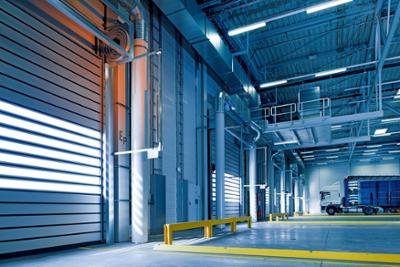

The 5 Errors to Avoid to Not Get Sanctioned During an Inspection
In the most recent inspection campaign conducted by industrial safety authorities, 96 out of 100 commercial, industrial, and garage doors were found to be non-compliant with their CE marking or mandatory safety requirements. CEportal describes prevalent errors committed by manufacturers, installers, and maintenance firms.
In the most recent inspection campaign conducted by industrial safety authorities, 96 out of 100 commercial, industrial, and garage doors were found to be non-compliant with their CE marking or mandatory safety requirements. As a result of this situation, a fresh nationwide inspection initiative has been implemented, with a substantial rise in the quantity of doors inspected and stricter penalty measures. Serious infringements can have economic sanctions of up to 6 million euros. Such an infringement necessitates the withdrawal of the offending door, along with all similar doors that have been installed.
CEportal explain that "after receiving numerous inquiries from our engineering department from companies that have undergone inspection on any of their marketed doors, these are the most common errors committed by manufacturers, installers, and maintenance companies:”
1. CE marking and expired or non-existent declarations of performance and conformity.
The CE marking should be attached to the door in an easy-to-see location and have a layout and details that conform with the Construction Products Regulations and the Machinery Directive (power-operated doors). The owner of the door should possess the declaration of performance and conformity, or the door manufacturer should keep a copy available for inspection if not.
2. CE marking for “unit production” in garage and commercial doors.
It is challenging to convince the regulatory authorities that a door installed in a garage or shop constitutes a unit production. CE marking for "unit production" can be used for bespoke, singular doors that are constructed according to specific design and performance standards specific for the customer’s needs. It is challenging for doors fitted in garages or commercial spaces to meet these requirements.
3. Do not conduct impact and anti-crush force tests.
Even if a company has a certificate confirming that a specific model of automatic door meets the force limitation tests, every unit that is installed must still conform to the maximum impact forces, anti-crush time and residual force at the measuring points specified in the standard. These measurements are also required for manual doors that have been motorised or for any “significant modifications” to an existing door.
4. Provide documentation and individual CE markings for each component of the door and think this is sufficient.
A company that markets a fully assembled door must provide CE marking and documentation for the entire door, regardless of whether it has manufactured any parts or only completed assembly and/or automation. In this instance, it will not be adequate to only submit the manual door's declaration of performance and the declarations of conformity for the individual electrical components that constitute it (motor, control panel, photocells, control system, etc.). It is mandatory to receive the installation, usage, and maintenance instructions, along with the maintenance book of the door that has been installed in addition to the CE markings and declarations.
5. Incorporate additional security measures due to the environmental risks.
It is essential to perform a risk analysis of the installation area and fit appropriate safety devices to the door. Especially with sliding and swing doors, the proximity and material of the structures near the door panel when it is being opened or closed may cause risks of being crushed. To ensure that risk is managed appropriately, it is crucial to conduct a risk analysis in compliance with relevant regulations, considering the user, environment, and type of activation. Based on this analysis, it is essential to include the required security measures.





